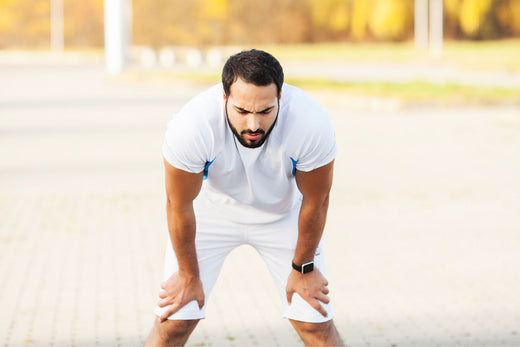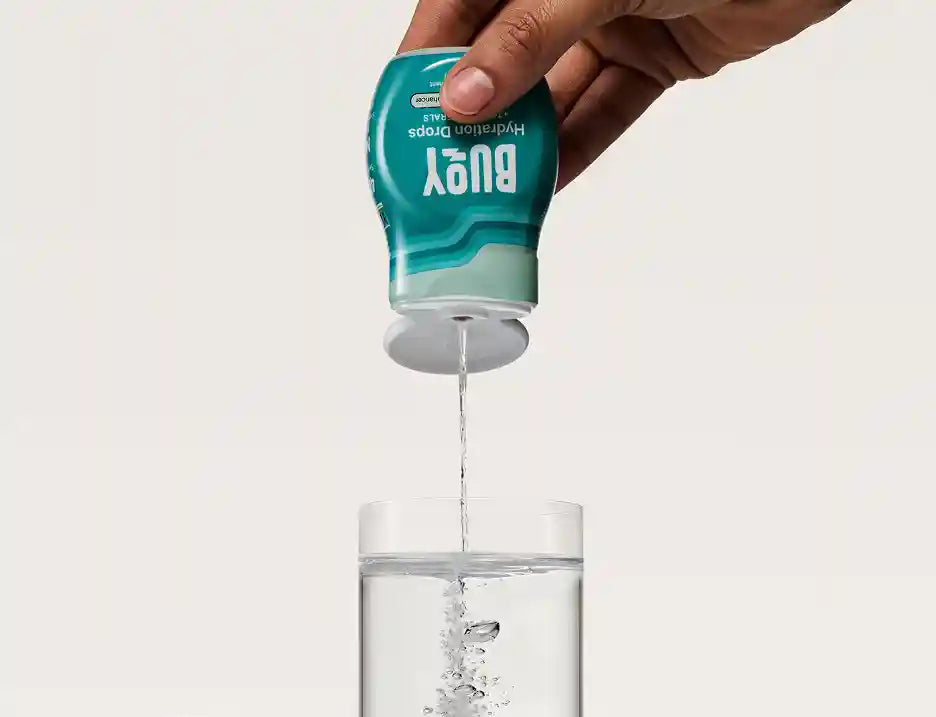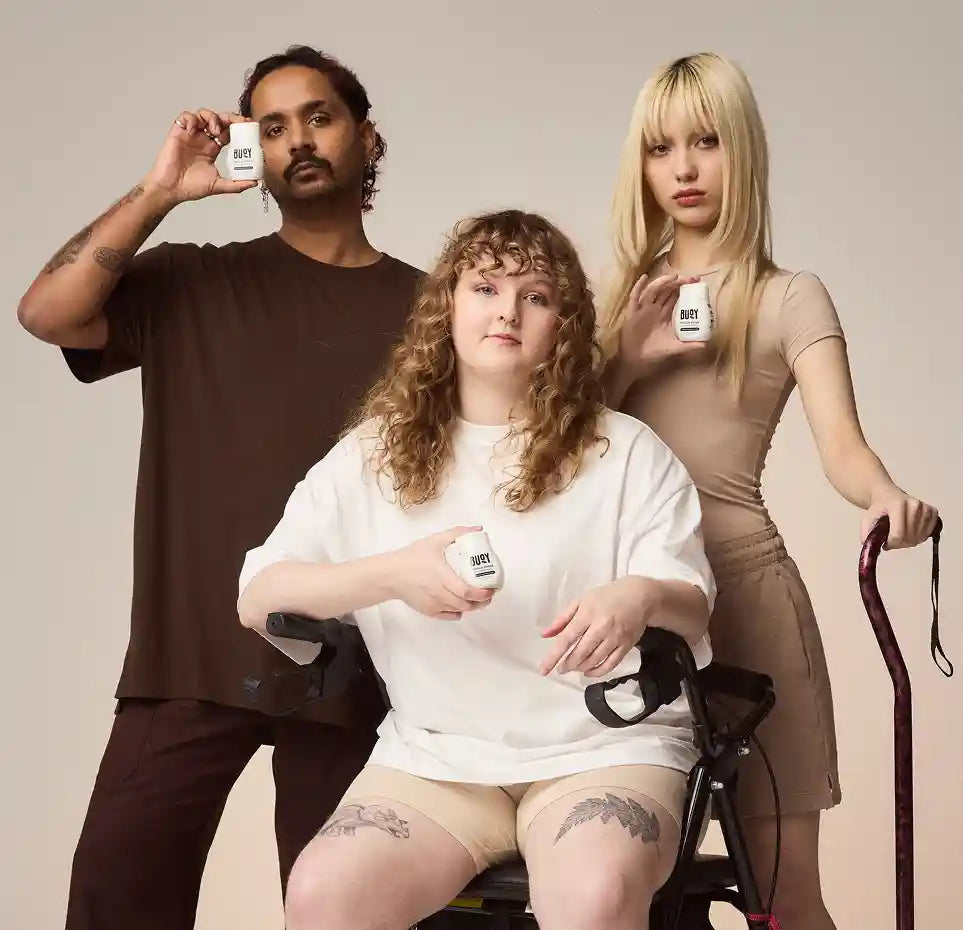
Understanding the Causes of POTS: An In-Depth Guide
Imagine waking up every day with a racing heart, dizziness, and overwhelming fatigue, unsure of what’s causing these symptoms. For many of you, this is the reality of living with Postural Orthostatic Tachycardia Syndrome, also known as POTS.
POTS is a complex disorder of the autonomic nervous system that controls automatic functions like heart rate and blood pressure. It affects an estimated 1-3 million people worldwide, and while the exact causes remain unclear, research has identified several possible factors that may contribute to its development (1).
Essential Takeaways:
- Understanding What Causes POTS: Research suggests that POTS can be caused by genetics and issues with the autonomic nervous system, which controls things like heart rate and blood pressure. Knowing what causes POTS can help you and your doctor to find better ways to manage your symptoms.
- Recognizing Other Possible Influences: Conditions like Ehlers-Danlos Syndrome, autoimmune disorders, and viral infections can also contribute to POTS. Additionally, lifestyle factors, such as not being active enough and chronic stress, can make symptoms worse. Identifying these influences can help you better manage your condition day-to-day.
We know how challenging it can be to navigate life with POTS. That’s why understanding these causes is so important for getting an accurate diagnosis and finding the right treatment plan for you. In this article, we’ll do a deep dive into the underlying causes of POTS, exploring the latest research findings and what they mean for managing this challenging condition.
- Overview of POTS
- Primary Causes of POTS
- Secondary Causes and Associated Conditions
- Lifestyle and Environmental Factors
- Current Research and Future Directions
Overview of POTS
So what is POTS? If you have POTS, you’ll experience a rapid increase in heart rate upon standing, along with symptoms like dizziness, lightheadedness, fatigue, and brain fog. To be diagnosed with POTS, your heart rate needs to increase by at least 30 beats per minute (or 40 beats per minute for those under 19 years old) within 10 minutes of standing, without a significant drop in blood pressure.
Most POTS Patients are Women
About 80-85% of people with POTS are women, and the severity of these symptoms can vary a lot from person to person, which can make getting a diagnosis and finding the right treatment a bit tricky (1,2). But by understanding the potential causes of POTS, your healthcare provider can better tailor your treatment plan to your unique needs.
Learn more about what is POTS in our guide, What is Postural Orthostatic Tachycardia Syndrome (POTS)?
Primary Causes of POTS
Now that we have a better understanding of what POTS is and how it can affect you, let’s look at the main factors that can contribute to the development of this condition. While the exact causes of POTS can be different for everyone, researchers have identified several key areas that seem to play a significant role.
These primary causes include dysfunction of the autonomic nervous system, genetic factors, and issues with blood volume regulation (2). By understanding these underlying factors, you and your healthcare provider can get a clearer picture of what might be contributing to your symptoms and develop a more targeted treatment plan.
Genetic Causes of POTS
As it turns out, your genes might play a role in whether you develop POTS. Recent studies suggest that some people with POTS have specific genetic variations that affect how their autonomic nervous system works.
For example, some people with POTS have mutations in a gene that helps produce nitric oxide, which is important for regulating blood flow. Another example is variations in a gene that helps control levels of norepinephrine, a chemical that affects heart rate and blood pressure (2,3).
Discover more about the genetic causes of POTS in our comprehensive guide, Is POTS Genetic?

To be diagnosed with POTS, your heart rate must increase by at least 30 beats per minute (or 40 bpm for those under 19) within 10 minutes of standing, without a significant drop in blood pressure.
Secondary Causes and Associated Conditions
Now that we’ve covered the primary causes, let’s look at some secondary factors that can contribute to POTS symptoms.
Ehlers-Danlos Syndrome (EDS) and Other Connective Tissue Disorders
EDS is a group of inherited disorders that affect the connective tissues, which provide support and structure to your skin, bones, blood vessels, and other organs. Many people with POTS also have EDS, particularly the hypermobile type (hEDS).
Researchers think the link between EDS and POTS might have to do with increased flexibility of blood vessels, which could contribute to blood pooling and other symptoms. Other connective tissue disorders, like Marfan syndrome and joint hypermobility syndrome, have also been linked to POTS (5).
Autoimmune Disorders
If you have an autoimmune disorder like lupus, Sjögren’s syndrome, or antiphospholipid syndrome, you may be more likely to develop POTS. In these conditions, your immune system mistakenly attacks the body’s own tissues, which could damage your autonomic nerves or affect how your blood vessels work.
Some studies suggest that autoantibodies (antibodies that target your body’s own proteins) might play a role in the development of POTS for some people (1,6,7).
Infections and Viral Triggers
Certain infections and viruses have been identified as potential triggers for POTS. For example, some people develop POTS following a viral illness such as mono (mononucleosis, caused by the Epstein-Barr virus) or COVID-19.
Lyme disease, a bacterial infection transmitted by tick bites, has also been associated with POTS. These infections may cause damage to the autonomic nerves or trigger an autoimmune response that leads to POTS symptoms (1,6).
Hormonal Imbalances
Hormones play a complex role in regulating the autonomic nervous system and cardiovascular function. Imbalances in hormones such as estrogen, progesterone, and thyroid hormones have been implicated in POTS.
For example, many women with POTS report an increase of symptoms during certain phases of their menstrual cycle, suggesting a link between estrogen levels and autonomic function. Thyroid disorders, such as hypothyroidism and hyperthyroidism, have also been linked with POTS-like symptoms (8).
Lifestyle and Environmental Factors
While the most common causes of POTS are related to your body’s internal functions, there are also some lifestyle and environmental factors that can play a role in managing your symptoms. Let’s take a look at a few key areas that you might want to focus on.
Physical Deconditioning
If you’ve been dealing with POTS for a while, you might have found yourself less active than you used to be. This is completely understandable, given how challenging your symptoms can make physical activity. However, being less active can actually contribute to the symptoms of POTS over time.
When you’re not moving around as much, your body becomes less efficient at regulating blood flow and maintaining adequate blood return to the heart when you stand up. This can make your POTS symptoms worse. The good news is that regular exercise and physical therapy can help improve your cardiovascular function and reduce your symptoms.
You Don’t Have to Be a Gym Rat
But here’s the thing – you don’t have to do intense exercises or even workout every day to see benefits. It can be as simple as going for a walk most days of the week or doing some gentle strength training a couple times a week.
Start Slowly and Listen to Your Body
The key is to start slowly and listen to your body. If you’re feeling overwhelmed or unsure of where to start, talk to your healthcare provider or a physical therapist who understands POTS. They can help you develop a safe and effective exercise plan that works for you.
Focus on Progress, Not Perfection
Remember, the goal isn’t to push yourself to the point of exhaustion – it’s to gradually build up your stamina and strength over time. And if you need to take breaks or modify your workout on days when your symptoms are acting up, that’s totally okay.
The most important thing is to be consistent and patient with yourself as you work toward improving your physical conditioning (2,3).
Stress and Psychological Factors
Let’s be real – living with a chronic condition like POTS can be stressful. And while stress and psychological factors don’t cause POTS directly, they can definitely make your symptoms feel worse.
When you’re under chronic stress, your sympathetic nervous system (the part that controls your “fight or flight” response) is activated more often. This can lead to a rapid heartbeat and other symptoms that overlap with POTS.
So while stress isn’t the root cause of POTS, finding ways to manage stress can be an important part of your treatment plan (2,3).
Diet and Nutrition
What you eat and drink can also influence your POTS symptoms. Some people with POTS find that eating a large, carb-heavy meal can cause a rapid drop in blood pressure, making symptoms worse. Staying hydrated is also super important, as dehydration can exacerbate POTS symptoms.
Some people with POTS find that increasing their salt intake can help them retain fluid and improve blood volume (3). However, you should talk to your doctor or a nutritionist before making any big changes to your diet, since everyone’s needs are different.

Add a pinch of Buoy Rescue Salt to your favorite food and drinks to help manage your POTS symptoms.
Current Research and Future Directions
Researchers have been working hard to better understand POTS and find new ways to manage symptoms. Let’s look at some of the recent developments and what they might mean for the future of POTS treatment.
Recent Research Findings
In the past few years, there have been some exciting breakthroughs in POTS research. In 2022, a study published in Scientific Reports identified new protein markers in the blood of people with POTS, which may help explain some of the symptoms. This research highlights the role of blood clotting, inflammation, and stress responses in POTS (9).
Additionally, a recent review on COVID-19 and POTS found that a significant percentage of COVID-19 survivors develop POTS within 6 to 8 months of infection. This supports the belief that viral infections can trigger POTS, possibly through things like autoimmunity or direct damage to the autonomic nervous system (10).
Gaps in Current Knowledge
Despite these recent advances, there’s still a lot we don’t know about POTS. Because the condition involves a complex combination of genetic, environmental, and lifestyle factors, it can be challenging to pinpoint the exact causes for each individual.
More research is needed to identify additional genetic and autoimmune factors that might contribute to POTS, as well as to understand the long-term effects of POTS on cardiovascular health and quality of life.
Future Directions
As research into POTS moves forward, there’s hope for more targeted and effective treatments. Scientists are looking into finding biomarkers—those are measurable indicators in your blood or other bodily fluids—that could help predict your risk of developing POTS or how well you might respond to certain treatments.
They're also exploring gene therapy and drugs that can adjust the immune system to tackle the root causes of POTS. Plus, there's a growing emphasis on patient-centered research, which means involving people with POTS in the research to better understand their experiences and what they need from treatments.
The Bottom Line
Living with POTS can be challenging, but by understanding the factors that contribute to your symptoms – both the underlying causes and the lifestyle and environmental influences – you can work with your healthcare provider to develop a comprehensive treatment plan that works for you.
And while there's still a lot to learn about POTS, ongoing research offers hope for better diagnostic tools, more targeted therapies, and improved quality of life for people living with this condition. Remember, you're not alone in this – there's a whole community of people with POTS, researchers, and healthcare providers working to improve understanding and treatment of this complex condition.
You’re Not Alone
Living with POTS can be incredibly challenging, but remember, you’re not alone in this. By understanding the potential causes of your symptoms, you and your healthcare provider can work together to find the best treatment plan for you.
Keep learning about your condition, advocating for yourself, and connecting with others who understand what you’re going through. With the right support and resources, you can find ways to manage your symptoms and improve your quality of life.
References:
- Dysautonomia International. (2019). 10 Facts Doctors Should Know About POTS. Retrieved from https://www.dysautonomiainternational.org/page.php?ID=180
- Zhao, S. & Tran, V.H. (Updated August 7, 2023). Postural Orthostatic Tachycardia Syndrome. Retrieved from https://www.ncbi.nlm.nih.gov/books/NBK541074/
- Cleveland Clinic. (2022). Postural Orthostatic Tachycardia Syndrome (POTS). Retrieved from https://my.clevelandclinic.org/health/diseases/16560-postural-orthostatic-tachycardia-syndrome-pots
- Raj, S.R., Biaggioni, I., Yamhure, P.C., Black, B.K., Paranjape, S.Y., Byrne, D.W. & Robertson, D. Renin-Aldosterone Paradox and Perturbed Blood Volume Regulation Underlying Postural Tachycardia Syndrome. Circulation. 2005 Apr 05;111(13):1574-82. Retrieved from https://pubmed.ncbi.nlm.nih.gov/15781744/
- Grigoriou, E., Boris, J. R., & Dormans, J. P. (2015). Postural Orthostatic Tachycardia Syndrome (POTS): Association with Ehlers-Danlos Syndrome and Orthopaedic Considerations. Clinical Orthopaedics and Related Research, 473(2), 722–728. Retrieved from https://www.ncbi.nlm.nih.gov/pmc/articles/PMC4294907/
- Li, H., Yu, X., Liles, C., Khan, M., Vanderlinde-Wood, M., Galloway, A., Zillner, C., Benbrook, A., Reim, S., Collier, D., Hill, M.A., Raj, S.R., Okamoto, L.E., Cunningham, M.W., Aston, C.E. & Kem, D.C. Autoimmune Basis for Postural Tachycardia Syndrome. Journal of the American Heart Association, 2014 Feb 26;3(1):e000755. doi: 10.1161/JAHA.113.000755. Retrieved from https://pubmed.ncbi.nlm.nih.gov/24572257/
- Gunning, W.T. 3rd, Kvale, H., Kramer, P.M., Karabin, B.L. & Grubb, B.P. Postural Orthostatic Tachycardia Syndrome is Associated with Elevated G‐Protein Coupled Receptor Autoantibodies. Journal of the American Heart Association, 2019 Sep 17;8(18):e013602. doi: 10.1161/JAHA.119.013602. Retrieved from https://pubmed.ncbi.nlm.nih.gov/31495251/
- Coupal, K. E., Heeney, N. D., Hockin, B. C. D., Ronsley, R., Armstrong, K., Sanatani, S. & Claydon, V. E. (2019). Pubertal Hormonal Changes and the Autonomic Nervous System: Potential Role in Pediatric Orthostatic Intolerance. Frontiers in Neuroscience, 13, 1197. Retrieved from https://www.ncbi.nlm.nih.gov/pmc/articles/PMC6861527/
- Johansson, M., Yan, H., Welinder, C., Végvári, Á., Hamrefors, V., Bäck, M., Sutton, R. & Fedorowski, A. (2022). Plasma Proteomic Profiling in Postural Orthostatic Tachycardia Syndrome (POTS) Reveals New Disease Pathways. Scientific Reports, 12(1), 20051. Retrieved from https://www.ncbi.nlm.nih.gov/pmc/articles/PMC9681882/
- Mallick, D., Goyal, L., Chourasia, P., Zapata, M. R., Yashi, K. & Surani, S. (2023). COVID-19 Induced Postural Orthostatic Tachycardia Syndrome (POTS): A Review. Cureus, 15(3), e36955. Retrieved from https://www.ncbi.nlm.nih.gov/pmc/articles/PMC10065129/




